MGB GT: The Forgotten Hero of Racing's Golden Age
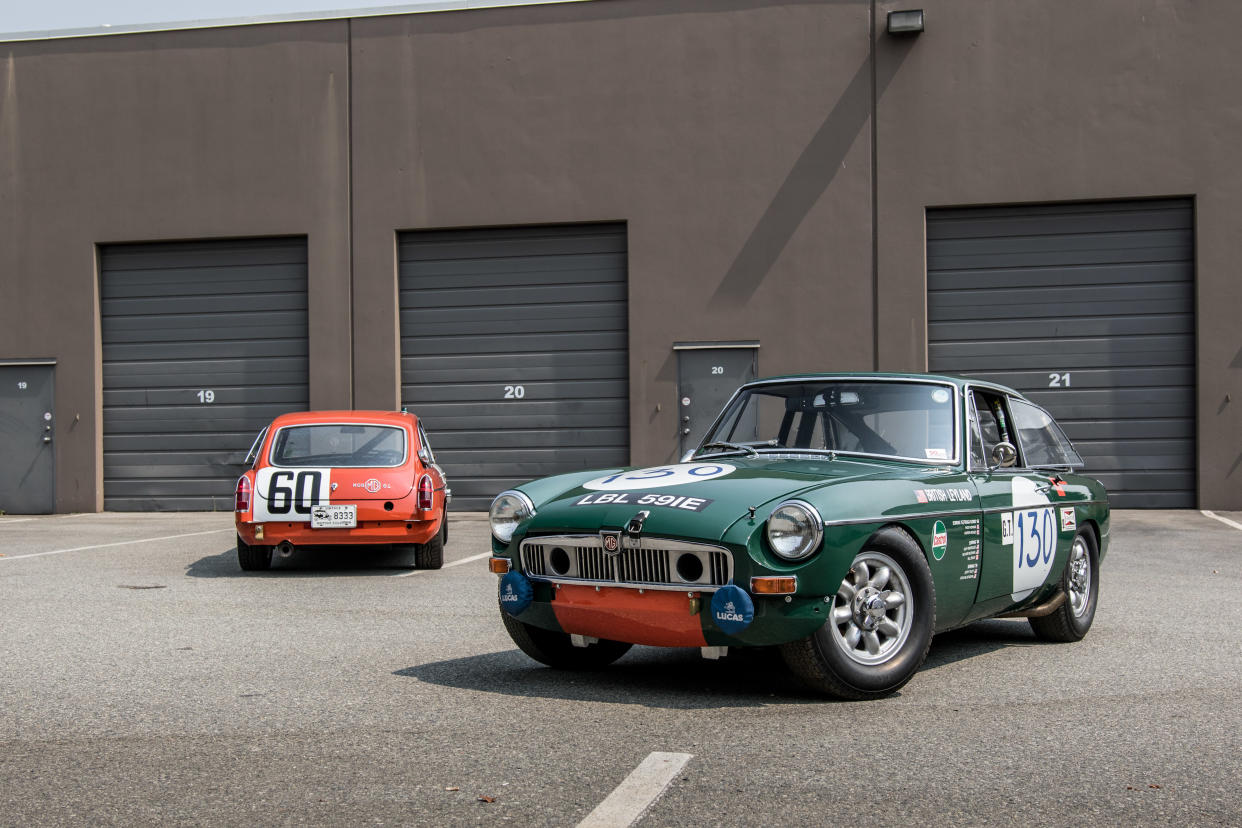
You may be forgiven for thinking the Battle of Britain was won by the Spitfire alone. That silhouette of elliptical wings banking to dive on a Messerschmitt or Focke-Wulfe is memorialized time and again on film and canvas, a machine made legend by its deeds. In reality, the wood-and-canvas Hawker Hurricane inflicted just as much damage on the invading Luftwaffe. The Hawker lacked the romance of the Spitfire, but had no difficulty handing out quad-Browning .303 beatdowns.
So too it is with the automotive world, where history lionizes the beautiful and overlooks the prosaic. England's banner is hoisted by the likes of the Jaguar E-Type, the Bentley Speed Six, and, more recently, the Aston-Martin V8 Vantage GTE. But if these are the royalty of the realm, leading the charge, they do not fight alone. History remembers the knights; it should also spare a moment for the foot soldiers of speed.
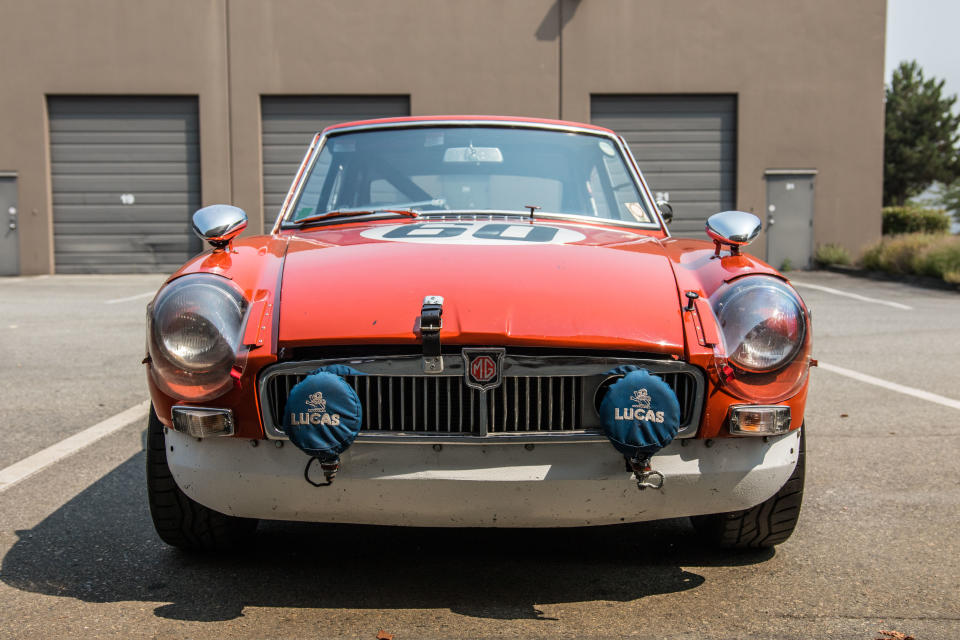
In an empty industrial complex on the outskirts of Delta, British Columbia, an engine coughs to life like Keith Richards waking up after a triple-encore gig. Hack-hack-hack-Jesusanotherday-hack-catch-huffhuff-vrummmm. Four cylinders hawk out a quarter-pint of internal-combustion phlegm, then settle into an idle that lopes along like a reformed drunkard's guitar lick. It sounds like it's running on unfiltered cigarettes.
It's one of a pair, the Blaze Red MGB GT familiarization car from the 1967 running of the 12 Hours of Sebring, sibling to the British Racing Green example that ran the event in the hands of Paddy Hopkirk and Andrew Hedges. The latter won its class, placing 11th behind Ford GT40s and Porsche 906s, and ahead of multiple Shelby GT350s and 911s.
I think we can all agree that's punching above your weight for a car that made not much more than 100 hp, with a theoretical top speed close to 100 mph. It's a bit like the sleeve of dear old Grandad's cardigan riding up to reveal a 1st Special Air Services tattoo.
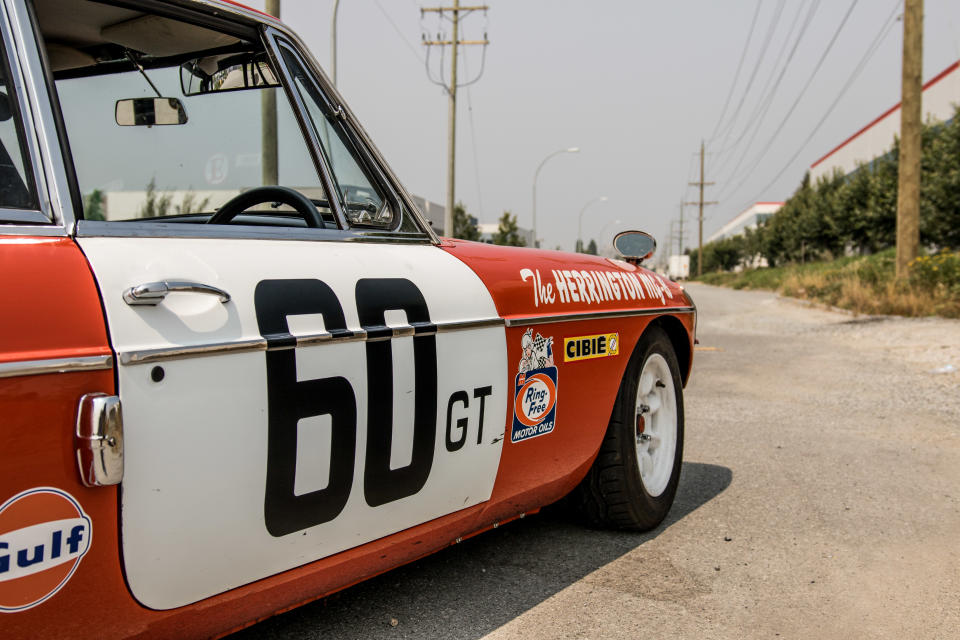
MGs, and pretty much all British cars for that matter, have long been the butt of jokes. Nearly everyone's heard about Lucas, Prince of Darkness, and the three headlight settings he perfected: Dim, Flicker, and Short. Common knowledge states that British cars are unreliable heaps of junk which leak oil like the Exxon Valdez, break down more frequently than diplomatic talks with North Korea, rust out so fast you'd think they were being slowly beamed aboard the USS Enterprise, and drop parts as if infected with automotive leprosy.
Except. Twelve hours at the limit. Mixing it up with the likes of Andretti, McLaren, Foyt, Yenko. Beating the stuffing out of eight-cylinder Shelbys and 'Vettes. Perhaps the 'B, like the Hurricane, has been hiding its light under a bushel.
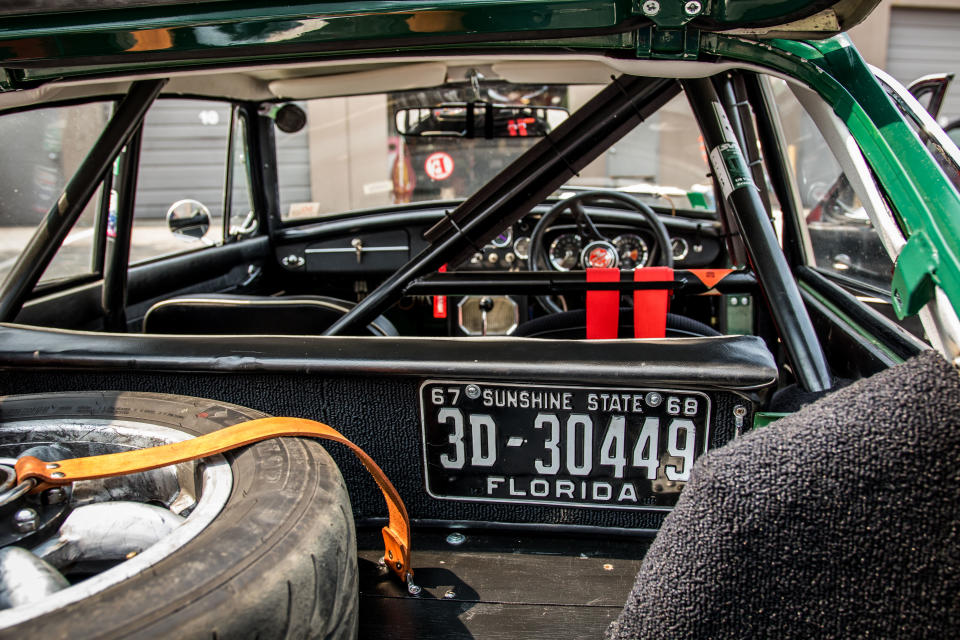
Known by its registration number, LBL 591E was plucked from MG's production line in Abingdon, Oxfordshire. It would be the marque's final four-cylinder factory works racing effort, and while the '67 Sebring was its first outing, it would go on to further glories, finishing second in class at the 1968 Targa Florio. Again, it beat a Luftwaffe's worth of 911s, as well as all manner of Alfa Romeos and a Ferrari Dino.
No doubt laurels must be set on the head of Paddy Hopkirk. By the time the Belfast-born Ulsterman tackled the Florio, he'd already made a name for himself as BMC's resident hotshoe, having clinched the '64 Monte Carlo Rally in a Mini Cooper S. Further, he was coming off back to back wins at the Circuit of Ireland and the Alpine Rally, as well as winning the 1967 Rally Acropolis.
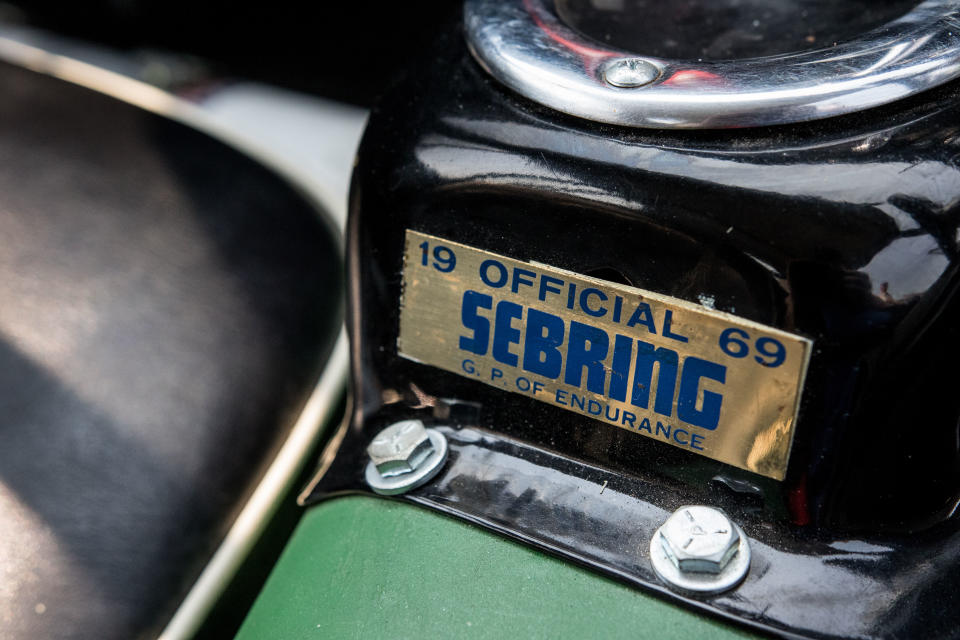
“One lap of the Targa Florio is 45 miles,” says Ralph Zbarsky, owner of both MGB GTs. “Hopkirk told me that he was out of cigarettes by the end of round one.”
Zbarsky restored both these machines back to their days of glory. His garage tells the all-too-common story of an automotive hook being set. A battered red MGA from his youth sits atop a four-post lift, its grille bent in all directions giving it a grin like Austin Powers, its roll bar plastered with decals from vintage races. This was genesis - now there's a similarly battle-scarred twin-cam MGA in the back, and an old frame belonging to one of the little-known MG Liquid Suspension Indy Cars. Fitted with a 255-ci Offy turbo four, these produced as much as 1000 hp in-period, but never placed a driver on the podium.
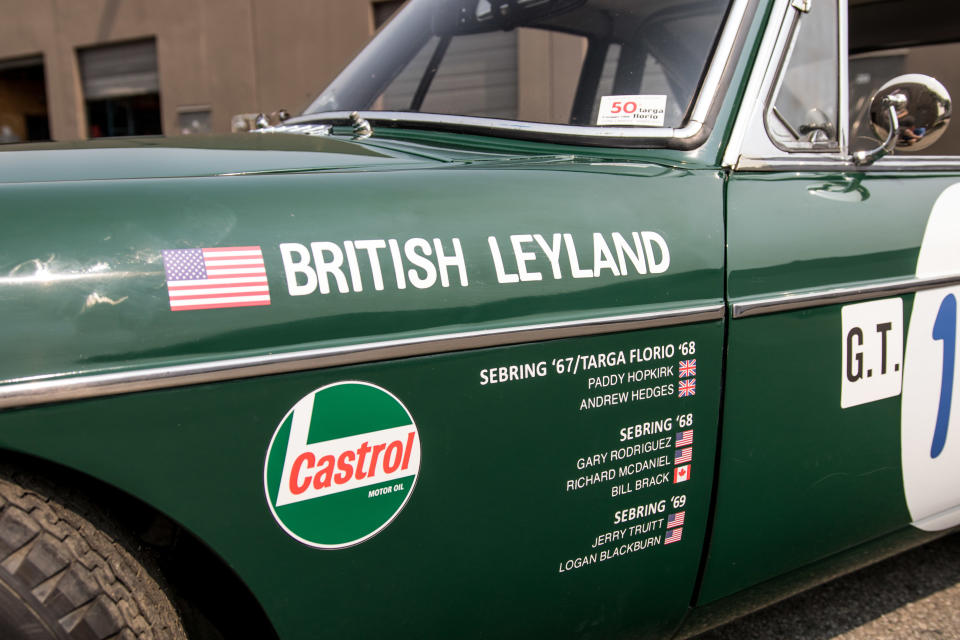
Sister car to LBL 591E, the GT wearing Herrington MGB racing livery has perhaps an even better story. Prepared by BMC USA as a practice car for Hopkirk and Hedges while the racing machine was shipped over from Abingdon, it was later gifted to Herrington Motors and ran a number of races. At the 1970 running of the Sebring 12 hours an ill-considered wheel spacer came adrift, causing the car to barrel-roll spectacularly. The crash was caught and replayed on ABC's Wild World of Sports.
The wreckage was mounted above a bar as cheeky decoration. Then the bar burned down. At last, thanks to an old ad in the back pages of a magazine, Zbarsky stumbled across both the Herrington car and, later, LBL 591E. Restoring both took years, with sourcing period-correct decals presenting a particular challenge.
Both machines are set up for vintage racing, but the Herrington car is plated for the street. Zbarsky throws me the keys.
It's a right-hooker in a left-hand-drive country, and first gear requires a modicum of persuasion. In my head, I picture Paddy hammering it up with a muffled Norn Iron curse. C'mon, ye bollix. The 'B shuffles out of the complex in a cloud of hydrocarbons, finds a clear road ahead, and leaps forward.
“Leaps” is a relatively broad term here for basically a factory-engined MGB, but the old battler has spirit. What's more, everything's exposed, making for a rattling, juddering, gear-whining cacophony. It's like the Brits invented an internal combustion maraca.
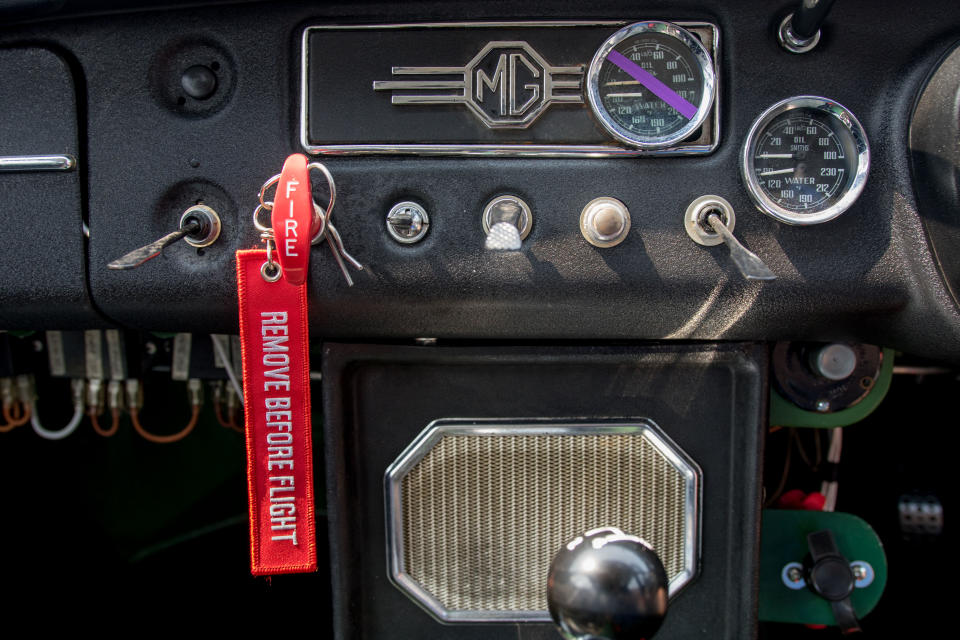
Details abound, each one delicious. The factory position for the Smiths oil temperature gauge placed it behind the wood-rimmed wheel, hard for the driver to see at speed. Italians would have simply ignored it. Americans would have re-engineered things. BMC's team just installed a second unit a little further over.
Reeking of gasoline, I guide the Herrington MGB back home. Twelve hours of this, with the roar of Mk IV GT40s hurtling past in the dark. It'd be the Blitz all over again.
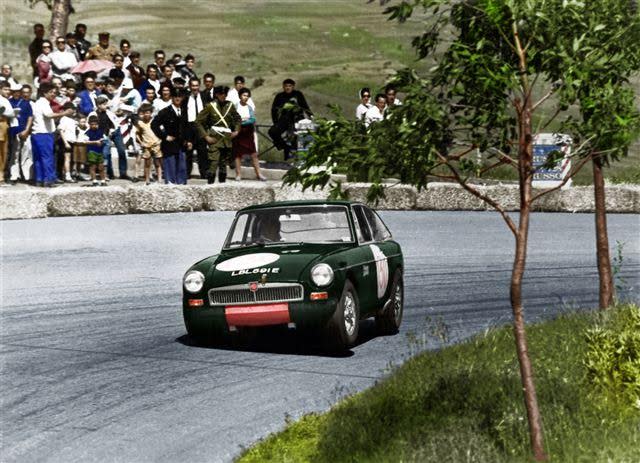
The MGB, both roadster and GT versions, were built up until 1980. By then, like most cars that survived the 1970s, they'd become bloated, with jacked up ride heights and rubber bumpers. The short skirts and long jackets of the time took one look, then traded their cars in on white Chrysler LeBarons instead.
But the 'Bs left behind a heritage of motorsport, from the last factory-backed LBL 591E to club racing. The sheer numbers of MGBs sold made them cheap, popular options for cash-strapped racers. Decades later, the Miata resembles the Lotus Elan, but can more properly be considered the B's spiritual ancestor.
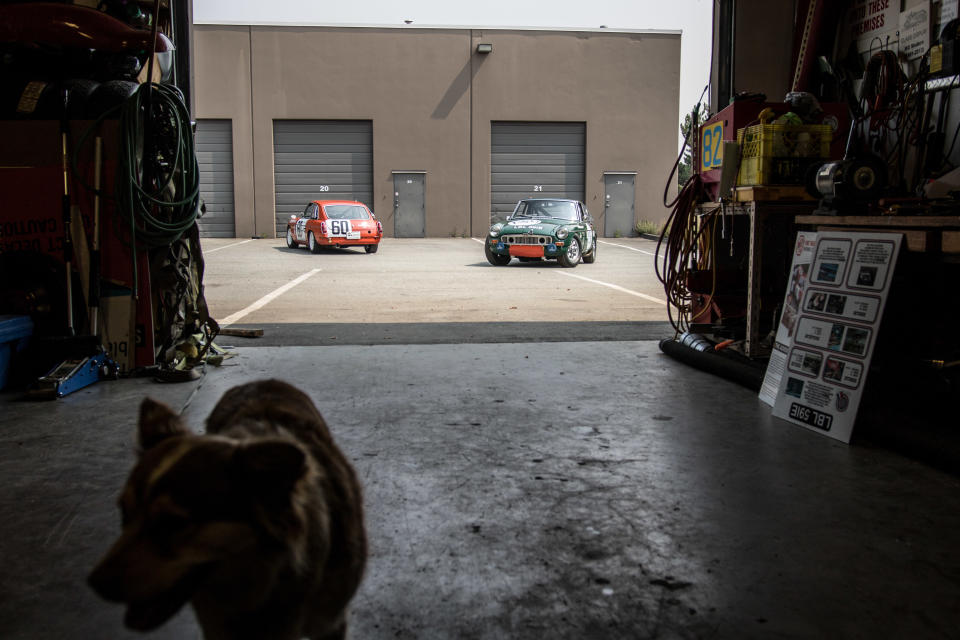
As for Zbarsky's two special machines, the question is whether to preserve or to continue to compete. “As the last four-cylinder works effort, with the racing provenance of Sebring and the Targa Florio, what's it worth?” Zbarsky asks, “And what if I get hit?” He shrugs.
“My son thinks we should just keep driving the hell out of them.”
I can think of no better tribute. Others may have got the glory, but these little Bs had the guts. Drive the wheels off 'em, and if something gets bent, it's only paint and metal. Paint, metal and proper British fighting spirit.
You Might Also Like

